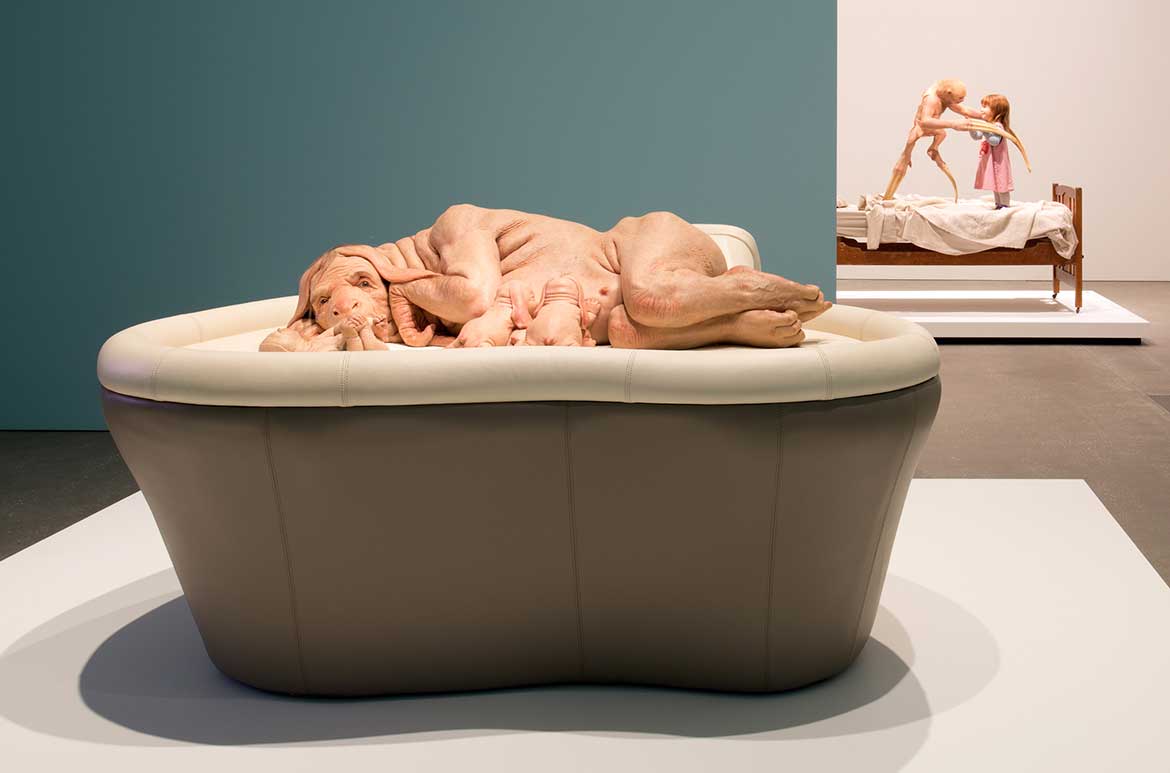Patricia Piccinini Writing Competition
How can art and science be used to imagine a shared future? Ask the kids. They know how to do it.
Get them early, before they’re taught that science and art are in conflict. That’s wrong. Art and science are united by creativity. In art, it’s obvious where people use their imagination. It can be harder for people to understand that science is just as creative, especially if their only experience with it was in a classroom. Science is not a detached, clinical compilation of facts in a textbook. That is how it’s presented to society, but that is not how it’s conducted.
The facts are the output, but science itself is a process of discovery. Scientists work on questions that don’t have answers and, sometimes, questions that have never been asked. Curiosity leads the search and creativity finds the solution. Scientists are explorers and problem solvers. Science isn’t about what you know, it’s about what you ask and how you ask it. The keystones of science are curiosity and creativity.
Patricia Piccinini, Australia b.1965 / The Young Family 2002 / Silicone, fibreglass, leather, plywood, human hair; ed. 1/3 / 80 x 150 x 110cm / RHS Abbott Bequest Fund 2003 / Collection: Bendigo Art Gallery, Vic. / © The artist
The art and science mindset
Kids are born with the potential to be scientists and artists, but we train them out of it. If they dare to dream big, society tries to wake them. Soon enough, they want to grow up, get through school and into a stable desk job. They want someone to tell them everything they need to know – right and wrong and nothing more – because that makes their lives simple and easy.
The children who escape, who grow into scientists and artists, have something in common. They ask why and why not. There is a difference between thinking and knowing, and these kids like thinking.
There is a thrill in creating a thought and making something out of it. When we seek the instant gratification of pre-programmed answers, we miss out. If we linger on what we already know, then our world is full of answers and there is no room left for imagination. The more we know, the less we tend to think. We cannot even imagine how much more is out there.
Thinking is difficult. You need to accept that you don’t know all the answers and resist the temptation to accept, at face value, the first suggestion that comes along. There is a fine line between imagining things that could fill the gaps and deluding yourself into calling it a fact.
The more you learn, the more you realise how much you don’t know, and will never know. If you start thinking, you will quickly gather more questions than answers. It’s terrifying. It’s hard.
Don’t let that stop you.
There is beauty in complexity and ambiguity. Embracing uncertainty is humbling and life-changing. It opens your mind to things beyond right and wrong. It removes a filter, and suddenly you no longer see the world in plain black and white, but in its wonderful and mysterious nuances.
You see a more complete picture, because the world isn’t clear-cut into right and wrong, into scientists and artists. The closer you look, the blurrier the distinction becomes.
If artists don’t experiment, they won’t create anything new. If scientists aren’t creative, they don’t make discoveries. If you take away the hours of practice in different areas and go to the core of a person you will see that scientists are artists, and artists are scientists. They are just the people who refused to grow up.
The future?
Combined, art and science have the power to unite humanity with understanding and creativity. There is no conflict, they reinforce each other. We already know this. We can imagine the technology and advancements.
Here is a question we haven’t answered: why haven’t we made this ideal future a reality yet?
I think the answer is clear. We don’t have enough artists and scientists. So let the robots take our desk jobs. Instead of programming kids in binary right and wrong, we’ll program the AIs and we’ll teach the kids how to think. That would be a good start.
Then, we can ask the kids to imagine their future, and when they grow up, they’ll be ready to create it.
Patricia Piccinini, Australia b.1965 / The Welcome Guest 2011 / Silicone, fibreglass, human hair, clothing, taxidermied peacock; ed. 1/3 + 1 AP / Dimensions variable / Courtesy: The artist; Tolarno Galleries, Melbourne; Roslyn Oxley9 Gallery, Sydney; and Hosfelt Gallery, San Francisco / © The artist
Read more on our blog / Watch exclusive interviews and behind-the-scenes footage on YouTube / Listen on Spotify / Visit our website
Lauren Thornton is joint winner of ‘Patricia Piccinini: Curious Affection’ Emerging Creatives Writing Competition. Propositions on Imagined Futures: How can art and science be used to imagine a shared future.
Feature image: Patricia Piccinini’s The Young Family 2002, installed in ‘Curious Affection’, GOMA 2018


